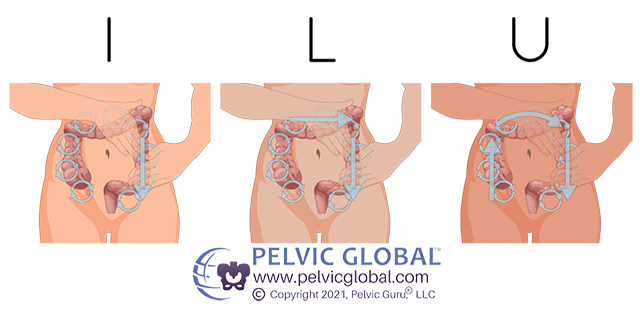8 Tips to Relieve Holiday Constipation:
- Carly Gossard

- Dec 28, 2022
- 4 min read
Updated: Nov 17
Constipation during the holiday season…yikes! That’s the last thing anyone has time to deal with. But let’s face it, with holiday travel, increased stress to finish last minute shopping, and eating on the go, constipation may be harder to avoid than we thought. Below are some tips and tricks to keep your bowels happy and healthy through the holidays.
#1 Hydration
Drinking water is one of the easiest things we can do to help decrease constipation! Ideally we want to aim for half our body weight in fluid ounces of water per day. When we allow our body to be properly hydrated, less water is drawn out of the colon. This allows our stool to remain soft (think type 3 & 4 on the Bristol Stool Chart - see below) and easy to pass. If drinking plain water isn’t your jam, add some lemon juice to help with the flavor. The citrus may also help stimulate the bowels.

#2 Fiber
Holiday calories don’t count right?? Between enjoying the baked goods and sweet treats it’s easy to forget about our fiber intake. There are two types of fiber, soluble and insoluble, which each have their own unique benefits. However when it comes to bowel health, insoluble fiber is the type that we want to be mindful of. Insoluble fiber attaches to waste in the body, making the stool bulkier, softer, and easier to pass. Bulkier stool also facilitates contraction of the intestines to sweep the stool along the digestive tract. Some common examples of insoluble fiber are fruits with skins, uncooked veggies, nuts, legumes, bran, brown rice, and whole-grain flour.
#3 Portable Squatty Potty
The squatty potty puts your body into a natural squat on the toilet. This position helps the pelvic floor muscles to relax and helps straighten out the anorectal angle, which gives your stool an easier exit out of the rectum. Squatting when having a bowel movement may also reduce straining and decrease the time it takes to have a bowel movement. If you don’t have a portable squatty potty available you can always use a step stool, trash bin turned onto its' side, your luggage, books, a box, or anything that helps get your legs in an elevated position.

Image used with permission from Pelvic Guru, LLC www.pelvicglobal.com
#4 Magnesium
Magnesium is a critical mineral for nerve and muscle function. Magnesium citrate is one of the more popular types of magnesium supplements and helps to increase the amount of water in the intestines. It also helps relax the muscles of the intestines to help establish a smoother rhythm of movement. Natural Vitality CALM is a great option if taking magnesium citrate is recommended by your provider.

#5 Abdominal Massage
Abdominal massage can help stimulate the wave-like contractions in your intestines to get the waste moving through your digestive tract. Add a little lotion to your fingertips and try the I Love U massage.

Image used with permission for Pelvic Guru, LLC www.pelvicglobal.com
– Start by forming the letter “I” by stroking with mild-moderate pressure from just under the left ribcage down to the top of the left hip bone. Do this 10 times.
– Then form the letter “L” by stroking from under the right side of the ribcage to the left ribcage, and then down to the top of the left hip bone. Do this 10 times.
– Lastly, form the letter “U” by stroking from the top of the right hip bone up to the right ribcage, across to the left ribcage, and down to the left hip bone.
#6 Eating Breakfast
This may be the last thing you want to do when you are constipated but believe me, eating breakfast helps! The gastrocolic reflex is a physiologic response in which the simple act of chewing stimulates the gastrointestinal tract. This movement in the GI tract is what makes you feel the urge to have a bowel movement soon after eating. Regularly eating a hearty breakfast that includes fiber and healthy fats may strengthen your gastrocolic reflex and help initiate a morning bowel movement.
#7 Deep Breathing
When we perform deep breathing by activating the ribcage, abdomen, and diaphragm, our vagus nerve is stimulated. This helps us move into a calmer parasympathetic state, otherwise known as rest and digest. The parasympathetic nervous system promotes salivation and restores blood flow to the organs that aid in digestion. Allowing the diaphragm to fully expand also creates a gentle massage to the internal organs creating movement within our digestive system.
#8 Exercise
Lastly, motion is lotion! Staying regular with your exercise routine is super helpful when trying to avoid constipation. Cardiovascular exercise is a great way to reduce and relieve stress which can be a catalyst for constipation. Also incorporating yoga stretches that involve twisting such as open book, seated spinal twist, or thread the needle can massage the digestive tract to encourage stool to move through the intestines.
Happy & Healthy Poops for All this Holiday Season!
Team EPH







Comments